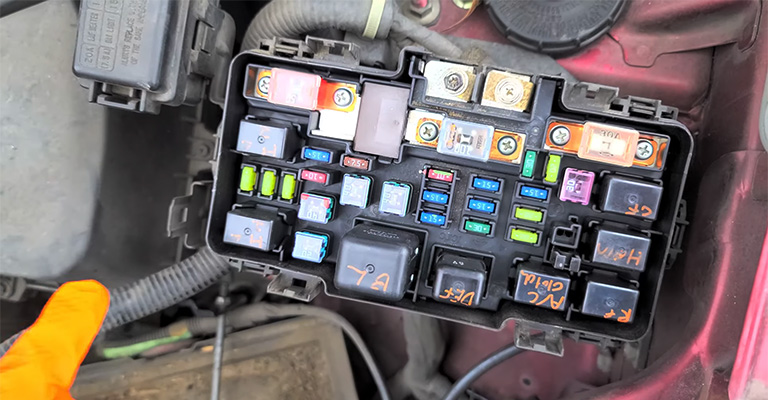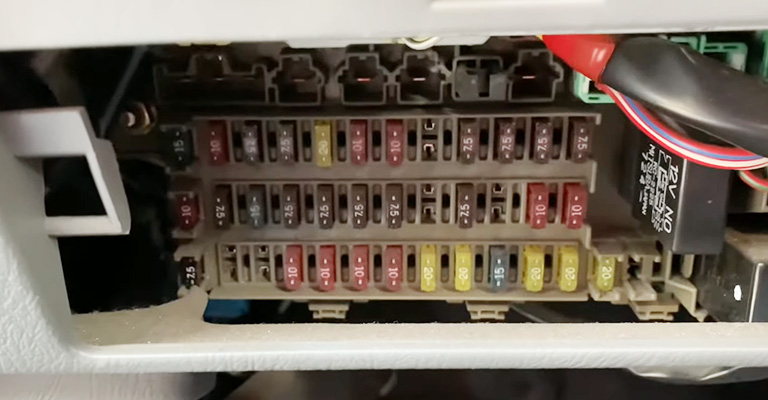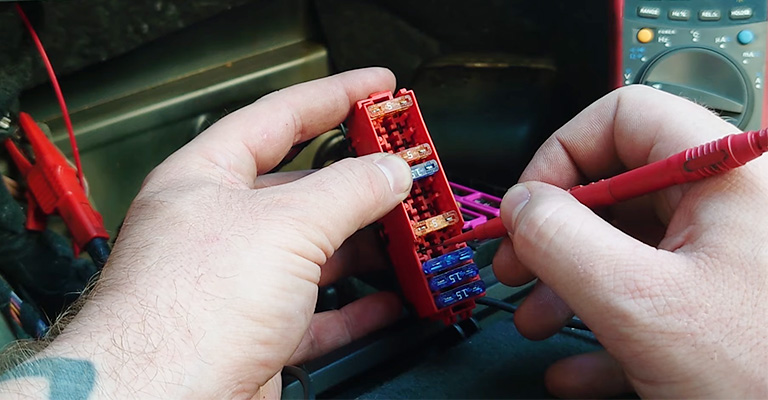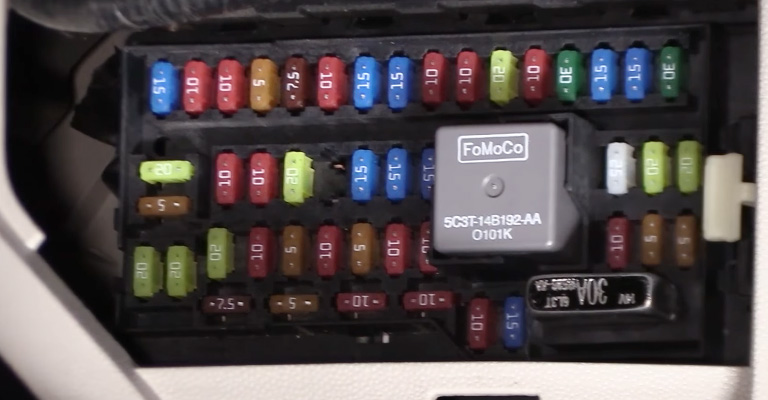Automotive electrical systems are a complex web of circuits and components designed to power various accessories and functions within a vehicle. One crucial element in this intricate network is the ACG fuse, a term that often leaves many drivers puzzled.
An ACG fuse typically refers to an “Accessory Power” or “Accessory Control” fuse in the context of automotive electrical systems.
ACG fuses are used to protect electrical circuits that power various accessories or components in a vehicle, such as the radio, interior lights, power windows, and other accessories that require electrical power even when the engine is not running or the vehicle is not in motion.
What Does ACG Mean?
So, what does ACG mean? It stands for “alternator circuit generator. The fuse is responsible for protecting the alternator circuit and the alternator itself from overcurrent.
If the ACG fuse blows, it can cause the alternator to stop functioning, which can have severe consequences for the vehicle. Buckle up and grab a bag of popcorn because we’re about to dive deeply into the world of ACG fuses.

What Does it Do?
The ACG fuse (fuse no. 24) is a type of electrical fuse specifically designed to protect the alternator circuit from overcurrent. The fuse is rated 15 amperes.
Likewise, the alternator is a device that generates electricity to power the vehicle’s electrical systems while the engine is running. It uses the engine’s mechanical energy to turn a rotor, which produces an alternating current (AC).
This AC is then converted into direct current (DC) by a rectifier and is used to charge the vehicle’s battery and power the electrical systems. The ACG fuse protects electrical systems powered by the alternator’s power.
Where is the ACG Fuse Located?

The ACG fuse is typically located in the SRS (Supplemental Restraint System) fuse block. This SRS is a collection of fuses that protect various electrical components and systems in the vehicle, including the SRS system itself.
You will need to consult the vehicle’s owner’s manual or fuse panel diagram to locate the ACG fuse in the SRS fuse block. This information should be found in the electrical or wiring section of the manual. Thus, it will provide the location and function of each fuse in the SRS fuse block.
But where is the SRS fuse block in the vehicle? The SRS fuse block is generally located in the vehicle’s engine compartment or under the dashboard.
This will depend on the make and model of the car. It is typically marked with a label or diagram indicating the location and function of each fuse.
Consequences of a Damaged ACG Fuse

If the ACG fuse is damaged or fails, it can have several implications for the vehicle’s electrical system and overall operation. The following will be affected in your car if the ACG is damaged.
- SRS unit: A component in the vehicle’s safety system that deploys the airbags in a collision
- Cruise control main switch: A control panel or button that allows the driver to turn on and off the cruise control function, which maintains a set speed for the vehicle
- SRS indicator light: A dashboard warning light that alerts the driver to any issues with the SRS system
- Shift-up indicator light: A dashboard warning light that indicates when the transmission should be shifted to a higher gear for better fuel efficiency
- Charge system light: A dashboard warning light that indicates problems with the system that keeps the battery charged
- ELD unit: An electronic device that monitors the electrical load on the alternator to prevent it from being overloaded
- Speed sensor: An electronic component that measures and tracks the speed of the vehicle’s wheels
- Voltage regulator: An electronic component that regulates the voltage output of the alternator to the correct level for the vehicle’s electrical system
- EACV: An electronic component that controls airflow to the engine to maintain the proper air-fuel ratio
- PGM-F1 main relay: An electrical relay that controls the flow of electricity to the ECU and fuel pump.
- Device control box: An electronic component that controls and monitors the operation of various electrical components and systems in the vehicle
- Cruise control unit: An electronic component that controls the operation of the cruise control function, which allows the vehicle to maintain a set speed automatically.
[Honda Civic Forum]: A photo illustrating what will be affected if no. 24 fuse fails.
What Causes the ACG Fuse Fuse to Blow?

There are several potential causes for a blown ACG fuse:
- Electrical short circuit: When a faulty wire or component allows an abnormal flow of electricity, it can result in an electrical short and potentially cause the ACG fuse to blow.
- Overloading: If there is too much demand on the electrical system, it can lead to the ACG fuse blowing. The overload could result when too many components are being used simultaneously. A malfunctioning part could also draw too much power.
- Electrical surge: A sudden and robust increase in the flow of electricity, such as from a lightning strike, can be too much for the ACG fuse to handle and cause it to blow.
- Corrosion or damage: If the ACG fuse is exposed to water or corrosive substances or suffers physical damage, it can weaken and become more prone to blowing.
- Age: As the ACG fuse ages, it can become weakened and more likely to blow, particularly if it has been subjected to high levels of heat or vibration.
How to Replace a Damaged ACG Fuse
Replacing a damaged ACG fuse is a relatively simple task that can be accomplished with a few essential tools. But before that, you need some safety equipment and tools, such as
- Eyeglasses or safety goggles
- Gloves
- Other safety equipment recommended by your vehicle’s manufacturer
- Multimeter
Here is a step-by-step guide on how to replace a damaged ACG fuse:
Step 1. Locate the Fuse Box

This is typically located either under the dashboard or in the engine compartment. Refer to your owner’s manual to determine the exact location of the fuse box.
Step 2. Identify the ACG Fuse
Look for a fuse labeled ACG or fuse 24. This is the fuse that needs to be replaced.
Step 3. Disconnect the Battery and Gather Safety Equipment
Disconnect the battery before attempting to replace the ACG fuse to prevent any electrical shocks or injuries.
4. Remove and Inspect the ACG Fuse
Use a fuse puller or a pair of needle-nose pliers to remove the ACG fuse from the fuse box gently. Be careful not to damage the fuse during this process. Look closely at it to see if it appears damaged. This could include visible signs of damage, such as a broken wire or a melted fuse element.
You can test it out with a multimeter as well. Set it to the “continuity” or “ohms” setting. This will allow you to test the resistance and the circuit continuity of the ACG fuse.
Touch one probe of the multimeter to one end of the fuse and the other probe to the other. If the resistance reads more than zero or infinity, the ACG fuse must be replaced. The same is true if the multimeter doesn’t beep during the continuity test.
5. Install the New ACG Fuse
If you determine that the ACG fuse needs to be replaced, it’s time to install the new one. Gently insert the new fuse into the box, ensuring it is securely in place.
6. Reconnect the Battery
Now reconnect the battery. Make sure that all of the electrical connections are secure and that the battery is installed correctly before attempting to start the vehicle.
7. Test the ACG Fuse
Start the vehicle and test the ACG fuse. If the ACG fuse is working correctly, the car engine will start.
FAQs
Here are answers to common ACG fuse questions.
Q: How Long Should an ACG Fuse Last?
The lifespan of an ACG fuse depends on the quality of the fuse, the electrical demands on the vehicle, and the vehicle’s operating conditions. However, an ACG fuse should last forever with a well-maintained car electrical system.
Q: Should I replace my ACG Fuse Often to Avoid Problems?
It is generally unnecessary to replace your ACG fuse often to avoid problems. The ACG fuse protects your vehicle’s electrical system and should last for several years under usual driving conditions.
Conclusion
If you were wondering, what is an ACG fuse? What does ACG mean? The information in this article has answered all your queries. You know what systems will be affected if this fuse is blown out. So, to avoid frequent ACG fuse breakdowns, it is essential to take good care of the vehicle’s electrical system.
You can do this by properly maintaining it and promptly addressing any issues that may arise. This can include regularly checking and replacing damaged or worn-out components. You should also avoid overloading the electrical system and protect the vehicle from electrical surges or other external threats.

Leave a Reply